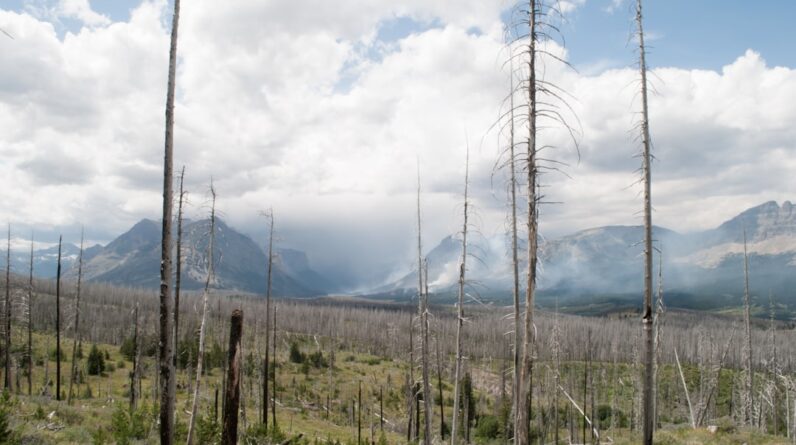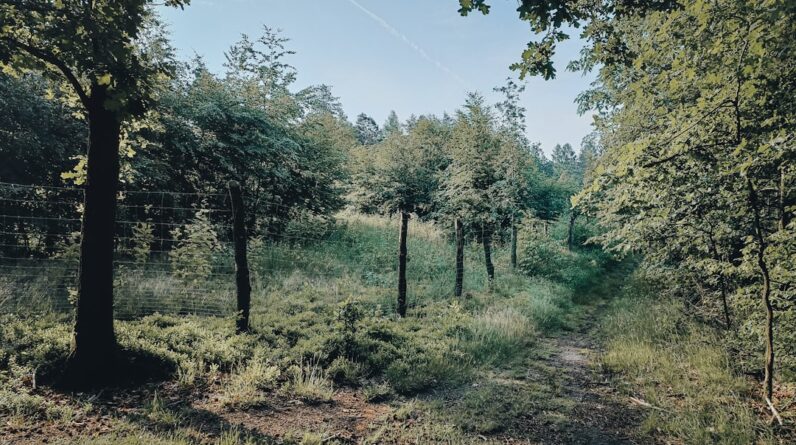
As you step into the realm of new forests, you find yourself enveloped in a world that is both vibrant and essential to the health of our planet. New forests, often created through reforestation or afforestation efforts, represent a significant opportunity for ecological restoration. These areas are not merely patches of trees; they are dynamic ecosystems that play a crucial role in combating climate change, enhancing biodiversity, and providing habitats for countless species.
The establishment of new forests is a testament to humanity’s growing awareness of environmental issues and the urgent need to restore the natural balance that has been disrupted over the years. In recent decades, the concept of new forests has gained traction as communities and organizations recognize the importance of trees in mitigating environmental challenges. You may be surprised to learn that these forests can emerge in various forms, from urban green spaces to vast rural plantations.
Each new forest contributes uniquely to the landscape, offering a sanctuary for wildlife and a refuge for endangered species. As you delve deeper into the significance of new forests, you will uncover their multifaceted benefits, not only for the environment but also for human well-being.
Key Takeaways
- New forests provide essential habitat for a wide range of wildlife, supporting biodiversity and ecosystem health.
- The impact of new forests on wildlife is significant, providing shelter, food, and breeding grounds for various species.
- Biodiversity in new forests plays a crucial role in maintaining ecological balance and resilience to environmental changes.
- Habitat restoration in new forests is important for the conservation of endangered species and the overall health of the ecosystem.
- New forests play a key role in supporting animal migration, providing corridors and stopping points for species on the move.
The Impact of New Forests on Wildlife
When you consider the impact of new forests on wildlife, it becomes clear that these ecosystems serve as vital havens for countless species. As trees grow and mature, they create a complex habitat that supports various forms of life. Birds, mammals, insects, and plants all find refuge within the canopy and underbrush of these newly established woodlands.
The diverse layers of vegetation provide food sources, nesting sites, and protection from predators, allowing wildlife populations to thrive in ways that would be impossible in more barren landscapes. Moreover, new forests can act as corridors that connect fragmented habitats, enabling animals to move freely between different areas. This connectivity is crucial for maintaining genetic diversity and ensuring the survival of species that may otherwise be isolated due to urban development or agricultural expansion.
As you explore these forests, you may witness firsthand the intricate relationships between flora and fauna, each playing a role in sustaining the ecosystem’s health. The presence of new forests can lead to an increase in wildlife populations, contributing to a more balanced and resilient environment.
The Role of Biodiversity in New Forests

Biodiversity is the lifeblood of any ecosystem, and new forests are no exception. As you wander through these vibrant landscapes, you will encounter a rich tapestry of life that includes various tree species, shrubs, fungi, and microorganisms. This diversity is essential for the stability and resilience of the forest ecosystem.
Each species plays a unique role in nutrient cycling, soil formation, and pest control, creating a balanced environment where life can flourish. In new forests, promoting biodiversity is often a key goal of restoration efforts. You may find that planting a variety of native species not only enhances the aesthetic appeal of the area but also supports local wildlife.
Native plants are adapted to the local climate and soil conditions, making them more resilient and better suited to support the animals that have co-evolved with them. By fostering biodiversity in new forests, you contribute to a healthier ecosystem that can withstand environmental stressors such as climate change and invasive species.
The Importance of Habitat Restoration
Habitat restoration is a critical component of establishing new forests, as it aims to revive ecosystems that have been degraded or destroyed. When you engage in habitat restoration efforts, you are actively participating in the healing process of the environment. This can involve planting trees, removing invasive species, or rehabilitating soil quality to create a thriving ecosystem once again.
The importance of these actions cannot be overstated; they not only restore ecological balance but also enhance the overall health of the planet. As you witness the transformation of a barren landscape into a flourishing forest, you may feel a sense of hope and accomplishment. Restored habitats provide essential services such as carbon sequestration, water filtration, and soil stabilization.
These benefits extend beyond the immediate area, positively impacting surrounding ecosystems and communities. By prioritizing habitat restoration in new forest initiatives, you are contributing to a sustainable future where both nature and humanity can coexist harmoniously.
The Relationship Between New Forests and Animal Migration
The establishment of new forests has profound implications for animal migration patterns. As you observe these newly created habitats, you may notice how they serve as critical stopover points for migratory species. Birds, in particular, rely on forests as resting places during their long journeys between breeding and wintering grounds.
The presence of food sources and shelter in new forests can significantly influence migratory routes and timing. Furthermore, new forests can help mitigate the effects of climate change on animal migration. As temperatures rise and habitats shift, many species are forced to adapt their migration patterns to survive.
By providing suitable habitats along migration routes, new forests can facilitate this adaptation process. You may find it fascinating how these ecosystems not only support resident wildlife but also play a crucial role in the broader context of global biodiversity and migration dynamics.
The Role of New Forests in Supporting Endangered Species

New forests hold particular significance for endangered species that require specific habitats for their survival. As you explore these areas, you may discover that they provide critical refuge for animals on the brink of extinction. Many endangered species have lost their natural habitats due to deforestation, urbanization, or agricultural expansion.
By creating new forests, conservationists aim to reverse this trend and offer these vulnerable populations a chance at recovery. The establishment of new forests can also facilitate breeding programs for endangered species by providing safe environments where they can reproduce without the threat of predation or habitat loss. You might find it inspiring to learn about successful conservation stories where new forests have played a pivotal role in increasing populations of endangered animals.
By supporting initiatives that promote the creation and maintenance of new forests, you contribute to safeguarding our planet’s most vulnerable inhabitants.
The Benefits of New Forests for Ecosystem Health
The health of an ecosystem is intricately linked to its biodiversity and habitat quality, both of which are enhanced by the presence of new forests. As you delve into the ecological benefits these forests provide, you’ll discover their role in improving air quality through carbon sequestration and oxygen production. Trees act as natural filters, absorbing pollutants and releasing clean air into the atmosphere—an essential service for both wildlife and human populations.
Additionally, new forests contribute to soil health by preventing erosion and promoting nutrient cycling. The roots of trees stabilize the soil while their fallen leaves decompose into organic matter that enriches the ground beneath them. This process creates a fertile environment where other plants can thrive, further supporting biodiversity.
As you witness the interconnectedness of these processes within new forests, you’ll gain a deeper appreciation for their role in maintaining ecosystem health and resilience against environmental challenges.
The Future of New Forests and Animal Havens
As you reflect on the significance of new forests in today’s world, it becomes evident that they represent hope for both wildlife and humanity alike. These ecosystems are not just about planting trees; they embody a commitment to restoring balance within our environment. The future of new forests hinges on continued efforts to promote biodiversity, support endangered species, and engage communities in conservation initiatives.
Looking ahead, it is crucial to recognize that your involvement can make a difference in shaping the future of these vital habitats. Whether through advocacy, volunteering for restoration projects, or simply spreading awareness about their importance, your actions can contribute to creating thriving animal havens across the globe. As we collectively embrace the potential of new forests, we pave the way for a healthier planet where both nature and humanity can flourish together in harmony.
In a related article on combating global warming, Combatting Global Warming by Massive Tree Planting, the importance of planting trees to mitigate the effects of climate change is highlighted. By creating new forests through massive tree planting efforts, not only can we provide havens for animals, but we can also help combat global warming and protect our planet for future generations. This article emphasizes the crucial role that trees play in saving the Earth from the devastating impacts of climate change.
FAQs
What is the importance of new forests in creating animal havens?
New forests play a crucial role in creating animal havens by providing habitat and food sources for a wide variety of wildlife species. These forests also contribute to the overall biodiversity and ecological balance of an area.
How do new forests benefit animal populations?
New forests provide shelter, nesting sites, and food sources for animals, which can help support and increase their populations. Additionally, these forests can create corridors for wildlife movement and migration, allowing for genetic diversity and species resilience.
What are some examples of animals that benefit from new forests?
Various species of birds, mammals, insects, and other wildlife can benefit from new forests. This includes but is not limited to deer, bears, birds of prey, songbirds, and small mammals such as squirrels and rabbits.
How do new forests contribute to the overall ecosystem?
New forests contribute to the overall ecosystem by providing oxygen, sequestering carbon, preventing soil erosion, and regulating water cycles. They also support a wide range of plant and animal species, which in turn contribute to the overall health and balance of the ecosystem.
What are some ways to support the creation of new forests for animal havens?
Supporting the creation of new forests for animal havens can be done through initiatives such as reforestation, afforestation, and conservation efforts. This can include planting trees, protecting existing forests, and promoting sustainable land management practices.





